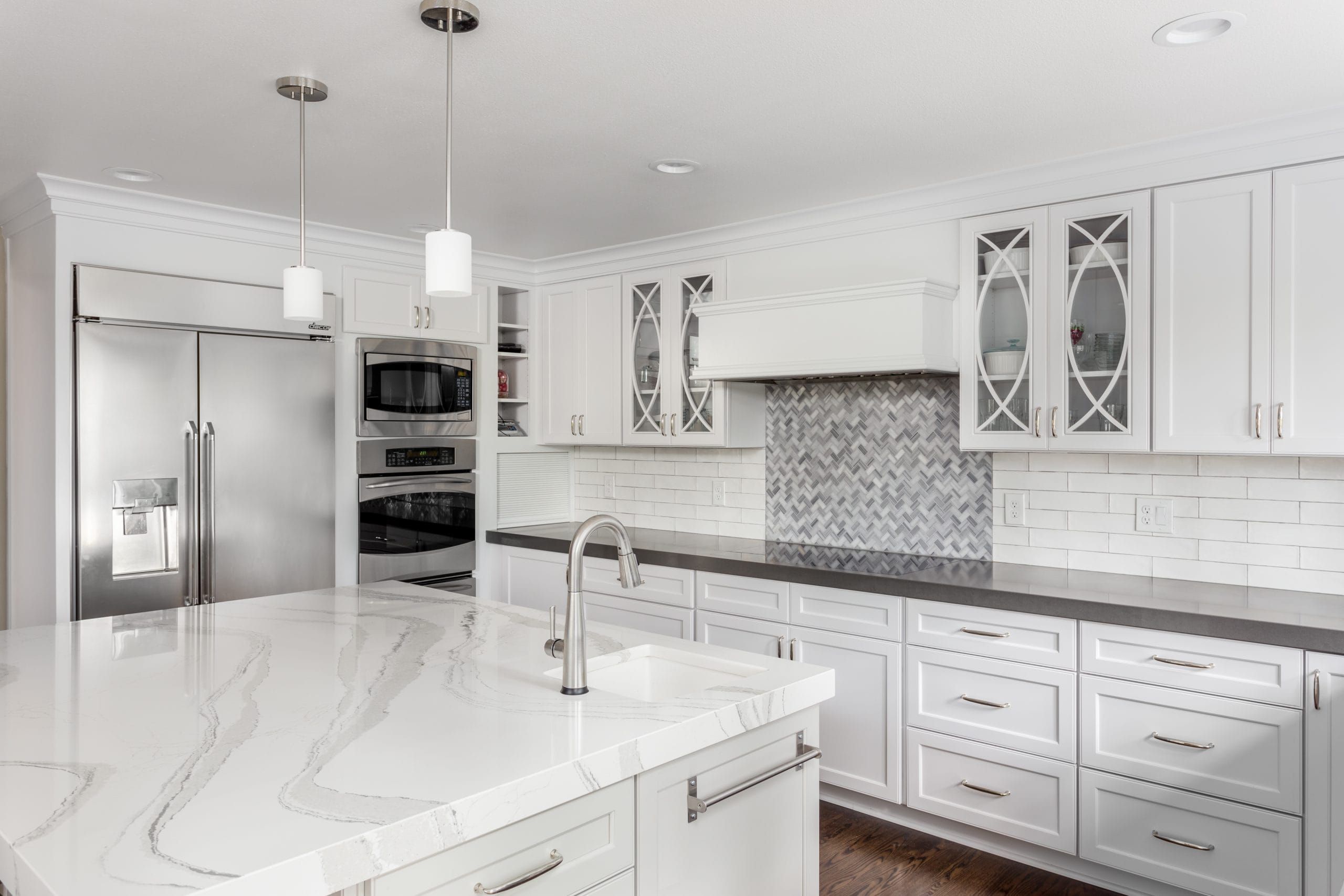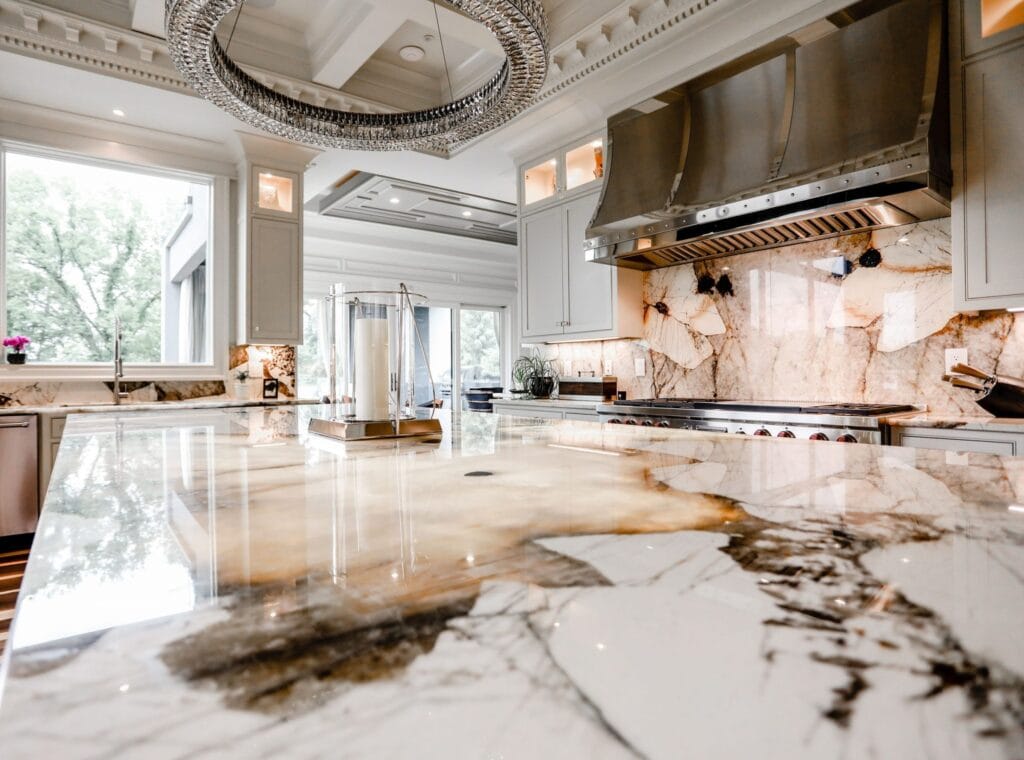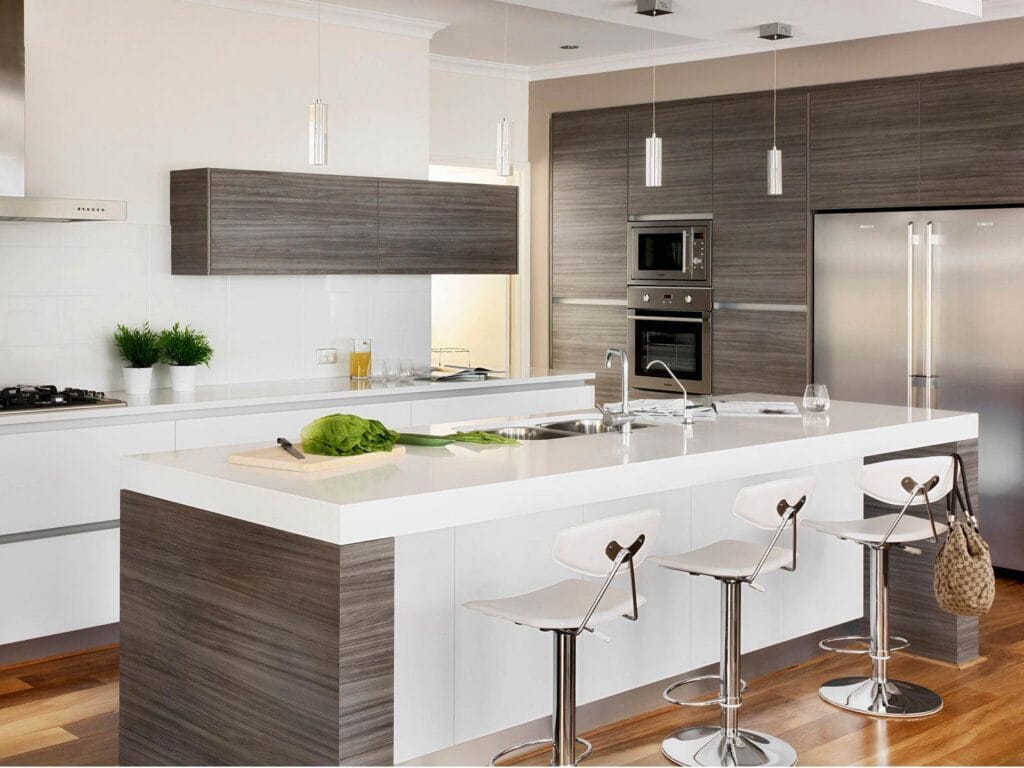
Understanding the Differences Between Granite and Marble
Differences Between Granite and Marble:
When it comes to natural stone countertops, two of the most popular options on the market are granite and marble. While they may seem similar at first glance, there are some key differences to note between these material types that can affect your decision when selecting which material you’d prefer to use for your next project. In this blog, we will break down the key characteristics of both granite and marbles in order to help you make the best informed decision.

First, lets talk about Granite:
Granite is an igneous rock. Igneous rocks are formed deep beneath the earth’s crust. Granite is comprised of several minerals which include quartz and mica, but it’s primary mineral is Feldspar. The amount of Fedspar within a granite is actually what gives the ingenous stone the identy of a granite.
Granite is formed from molten magma deep beneath the earth’s crust and contains high contents of metal oxides. Durring its heating and cooling process, (Metamorphism) its minerals form a course interlocking grain pattern.
This is another key identifying characteristic of Granite. The formation of It, and the minerals it’s comprised of, are why it is a very durable and heat-resistant stone that today has become quite popular for use in kitchen countertop applications as well as many other applications such as headstones, park benches, outdoor bbqs, buildig facing, floor tiles, and the list goes on.
Granites have a natural beauty and uniqueness to them which cannot be compared to that of engineered stones.
With its wide range of colors patterns, and variations (even within the same color family), each slab is truly one of a kind. This is why no two bundles of the same color type look exactly alike.
Now lets talk about Marbles Stone:
Marbles are also metamorphic rocks. They are comprised of some sedimentary minerals like dolomite, calcite and limestone (which are formed by sedimentation of the earth’s materials occuring mainly inside large bodies of water) and a few other clay type minerals.
Durring the Metamophic process, variable crystalization occures to the original mineral (carbonate) while under extreme heat and pressure.
This causes the minerals to form tiny interlocking grains fuzing them together. Though comprised of softer sedimentary minerals, the crystalization that occured under intense heat, pressure and time, help to make these minerals stronger and more durrable than other softer, sedimentary stones such as limestone, onyx, and travertines.
Marbles are typically classified by two primary minerals and classified as either Dolomitic or Calcite. Dolomitic marbles are generally a bit more durrable than the Calcite Marbles and can resist acid attack more than Calcite marbles. In their pure form, marble are crystalline and have a sugar like appearance.
As ground mineral pass through the rocks, they form vein patterns or colors. Marble’s appearance certainly is a “timeless look” and it’s beauty and elegance has been highly sought after and widely popular for generations.
Though used in many architectural features in historical buildings around the word, today, they are also used as a popular choice for bathroom vanities, decorative furniture pieces, stone accent walls, shower surrounds, as well as cut into mosaic tiles and carved into various sculptures and trinkets.
Marble is a heat-resistant stone because of the metamorphic process it went through, however it is not as durable as granite because of its comprised softer minerals, and therefore it is more prone to scratching, staining, and acid etching.
Because of it’s softer nature, marbles do require more caution and care than granites do. With that being said, their vein styled patterns and pure white underbases are tough match to compete with in terms of beauty and elegance thus making them a desirous material to incorporate into building projects and design around.

So how does one decide which one works best for them?
When choosing between granite or marble for your home renovation or new build project , it is important to recognize their differences in mineral makeup and to consider your needs, care rutiens and preferences for the application you with to use the stone for.
For example: If you’re looking for a durable and low-maintenance surface that can withstand just about any wear and tear you can throw at it as well as plan for consistent daily use, granites may be the best stone option for you.
However, if you prefer the elegance of a lighter marble and are willing to put in the extra effort to care for your countertops and prioritize their cleanliness, a marble may be a perfectly fine option. The application of your stone should play a huge role in your decision as well as your daily practices.
Some applications may demand durrability for you and your family, while others, do not require as much. For example: the use of a marble in a bathroom for a vanity or shower surround where colorful and potentially staining liquids are not really used, therefore is not really an issue.
At StoneX USA, we offer a wide range of natural stone countertop options including many granites and marbles colors as well as quartzites, dolomites, and soapstones. We also offer several engineered stone options such as quartz and porcelain slabs.
Our expert sales team here can assist you throughout the process of selecting the right material option for your home project, and provide you with a fabricator referral list for some of our business partners who offer professional fabrication and installation services if you do not already have a shop you are working through.
Stop in today to get started on making some material selections for your next home renovation project, and get inspired by the many stone options we have available for you right here in our West Allis, WI showroom.